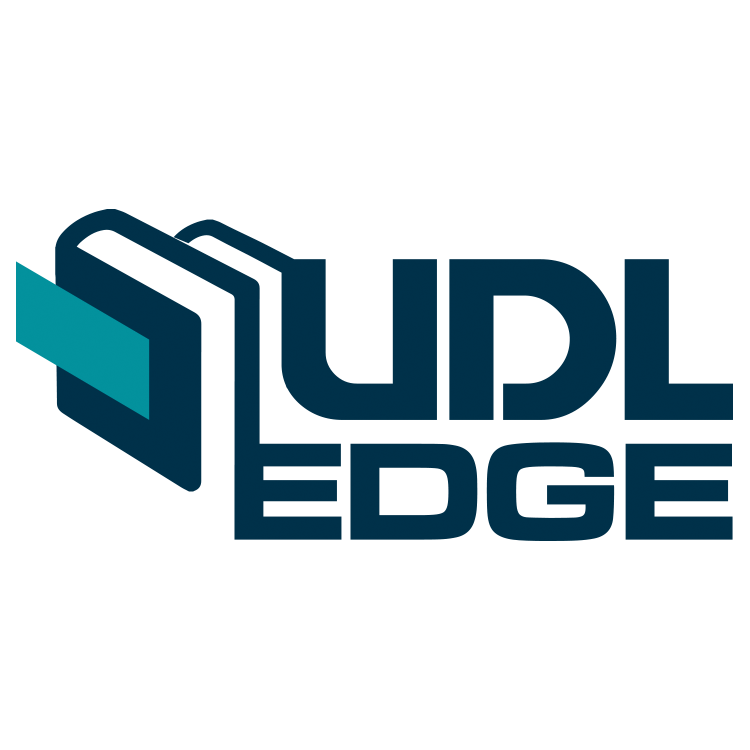BEST PRACTICE PENJAMINAN MUTU LULUSAN BERBASIS IASP 2020 DI SEKOLAH MENENGAH KEJURUAN
Abstract
Abstract: Tahun 2020, instrument akreditasi sekolah/madrasah mulai menggunakan Instrumen Akreditasi Satuan Pendidikan 2020 (IASP 2020). Dalam konteks IASP 2020, komponen mutu lulusan merupakan komponen yang memiliki bobot nilai paling tinggi dibandingkan dengan komponen lainnya. Penelitian ini bertujuan untuk mengeksplorasi proses penjaminan mutu lulusan berbasis akreditasi di Sekolah Menengah Kejuruan dengan menggunakan IASP 2020. Penelitian ini menggunakan metode penelitian studi kasus. Partisipan dalam penelitian ini ditentukan dengan metode purposive sampling, dengan kriteria: seluruh warga SMK yang telah mengalami proses penjaminan mutu lulusan dengan menggunakan IASP 2020. Jumlah partisipan dalam penelitian ini sebanyak 16 orang guru dan karyawan. Hasil penelitian menunjukan bahwa proses penjaminan mutu lulusan berbasis akreditasi dilakukan melalui program: 1) Persiapan: pemahaman IASP 2020, pembentukan tim penjamin mutu lulusan; 2) Melakukan EDS mutu lulusan berbasis IASP 2020; 3) Analisis kesenjangan antara hasil EDS dengan kondisi ideal; 4) Pemenuhan gap melalui perbaikan kinerja pada komponen mutu lulusan; 5) Evalusi program ketercapaian kinerja mutu lulusan dan tindak lanjut.
Keywords: mutu lulusan; akreditasi; IASP 20203; Sekolah Menengah Kejuruan.
Abstrak: In 2020, the school accreditation instrument began to use the 2020 Education Unit Accreditation Instrument (IASP 2020). In the context of the 2020 IASP, the component of graduate quality is the component that has the highest value weight compared to other components. This study aims to explore the process of quality assurance for accreditation-based graduates in Vocational High Schools using the IASP 2020. This study uses a case study research method. Participants in this study were determined by purposive sampling method, with the criteria: all SMK citizens who have undergone a graduate quality assurance process using IASP 2020. The number of participants in this study was 16 teachers and employees. The results showed that the accreditation-based graduate quality assurance process was carried out through the following programs: 1) Preparation: understanding IASP 2020, forming a graduate quality assurance team; 2) Conducting the 2020 IASP-based graduate quality EDS; 3) Gap analysis between EDS results and ideal conditions; 4) Fulfilling the gap through improving the performance of the graduate quality component; 5) Evaluation of the program for the achievement of the quality performance of graduates and the follow-up.
Keywords: graduated qualities; accreditation; IASP 2020; Vocational Senior High School.
Full Text:
PDFReferences
Abudu, K. A. &, & Gbadamosi, M. R. (2014). Relationship between teacher’s attitude and student’s academic achievemnt in senior secondary school chemistry. A case study of ijebu-ode and odogbolu local government area of ogun state. Wudpecker Journal of Educational Research, 3(3), 035–043.
Almoayad, F., Almuwais, A., Alqabbani, S. F., & Benajiba, N. (2020). Health professional students’ perceptions and experiences of remote learning during the covid-19 pandemic. International Journal of Learning, Teaching and Educational Research, 19(8), 313–329. https://doi.org/10.26803/ijlter.19.8.17
Awaludin, A. A. R. (2017). Akreditasi Sekolah sebagai Suatu Upaya Penjaminan Mutu Pendidikan di Indonesia. SAP (Susunan Artikel Pendidikan). https://doi.org/10.30998/sap.v2i1.1156
Beuermann, D., Navarro-Sola, L., & Pardo, F. (2018). What is a Good School, and Can Parents Tell? Evidence on the Multidimensionality of School Output. National Bureau of Economic Research Working Paper Series. https://doi.org/10.3386/w25342
Bodvin, K., Verschueren, K., & Struyf, E. (2018). School counsellors’ beliefs regarding collaboration with parents of students with special educational needs in Flanders: Parents as partners or opposites? British Educational Research Journal, 44(3). https://doi.org/10.1002/berj.3333
Cassell, C., & Bishop, V. (2019). Qualitative Data Analysis: Exploring Themes, Metaphors and Stories. European Management Review, 16(1). https://doi.org/10.1111/emre.12176
Deardorff, D. K. (2006). Identification and assessment of intercultural competence as a student outcome of internationalization. Journal of Studies in International Education, 10(3), 241–266. https://doi.org/10.1177/1028315306287002
Dietrich, N., Kentheswaran, K., Ahmadi, A., Teychene, J., Bessiere, Y., Alfenore, S., Laborie, S., Bastoul, D., Loubiere, K., Guigui, C., Sperandio, M., Barna, L., Paul, E., Cabassud, C., Line, A., & Hebrard, G. (2020). Attempts, successes, and failures of distance learning in the time of covid-19. Journal of Chemical Education. https://doi.org/10.1021/acs.jchemed.0c00717
Forrest-Lawrence, P. (2019). Case study research. In Handbook of Research Methods in Health Social Sciences. https://doi.org/10.1007/978-981-10-5251-4_67
Hasanah, E., Purnawan, P., Kuat, K., & Hamidun, E. (2020). Pelatihan penjaminan mutu sekolah berbasis akreditasi di SMK Muhammadiyah 2 Bantul. Prosiding Hasil Pengabdian Kepada Masyarkat, 799–806.
Hasim, W., & Hasanah, E. (2020). The Role of Principal Leadership in Preventing COVID-19 Transmission at SMA Muhammadiyah 2 Karang Tengah Buay Madang Timur Indonesia. Asian Journal of Education and Social Studies, 11(1), 1–10. https://doi.org/10.9734/ajess/2020/v11i130279
Holm, T., Sammalisto, K., & Vuorisalo, T. (2015). Education for sustainable development and quality assurance in universities in China and the Nordic countries: A comparative study. Journal of Cleaner Production, 107. https://doi.org/10.1016/j.jclepro.2014.01.074
Ibrahim, H. A.-H. (2014). Quality Assurance and Accreditation in Education. Open Journal of Education. https://doi.org/10.12966/oje.06.06.2014
Itohan Oviawe, J. (2017). Bridging Skill Gap to Meet Technical, Vocational Education and Training School-Workplace Collaboration in the 21 <sup>st</sup> Century. International Journal of Vocational Education and Training Research, 3(1). https://doi.org/10.11648/j.ijvetr.20170301.12
Jupp, V. (2015). Purposive Sampling. In The SAGE Dictionary of Social Research Methods. https://doi.org/10.4135/9780857020116.n162
Kalpokaite, N., & Radivojevic, I. (2019). Demystifying qualitative data analysis for novice qualitative researchers. Qualitative Report, 24(13).
Kurland, H., Peretz, H., & Hertz-Lazarowitz, R. (2010). Leadership style and organizational learning: The mediate effect of school vision. Journal of Educational Administration, 48(1). https://doi.org/10.1108/09578231011015395
Leon Rohr, S. (2016). Harnessing the power of the job description. Human Resource Management International Digest, 24(6). https://doi.org/10.1108/HRMID-09-2015-0143
Lundahl, L. (2012). Educational Theory in an Era of Knowledge Capitalism. Studies in Philosophy and Education, 31(3). https://doi.org/10.1007/s11217-012-9304-9
Mariscal, J. (2005). Digital divide in a developing country. Telecommunications Policy, 29((5-6)), 409–428. https://doi.org/10.1016/j.telpol.2005.03.004
Metsing, I. T., Hansraj, R., Jacobs, W., & Nel, E. W. (2018). Review of school vision screening guidelines. In African Vision and Eye Health (Vol. 77, Issue 1). https://doi.org/10.4102/aveh.v77i1.444
Murray, C., Heinz, M., Munday, I., Keane, E., Flynn, N., Connolly, C., Hall, T., & MacRuairc, G. (2020). Reconceptualising relatedness in education in ‘Distanced’ Times. European Journal of Teacher Education. https://doi.org/10.1080/02619768.2020.1806820
Padhi, L. K., & Mishra, D. (2020). Learning how to learn. International Journal of Web-Based Learning and Teaching Technologies, 15(3), 46–59. https://doi.org/10.4018/ijwltt.2020070104
Pascarella, G., Strumia, A., Piliego, C., Bruno, F., Del Buono, R., Costa, F., Scarlata, S., & Agrò, F. E. (2020). COVID-19 diagnosis and management: a comprehensive review. In Journal of Internal Medicine (Vol. 288, Issue 2). https://doi.org/10.1111/joim.13091
Patton, M. Q. (2012). Qualitative research and evaluation methods (3rd ed.). Sage.
Raharjo, S. B. (2013). Evaluasi trend kualitas pendidikan di indonesia. Jurnal Penelitian Dan Evaluasi Pendidikan. https://doi.org/10.21831/pep.v16i2.1129
Ramhit, K. S. (2019). The impact of job description and career prospect on job satisfaction: A quantitative study in mauritius. SA Journal of Human Resource Management, 17. https://doi.org/10.4102/sajhrm.v17i0.1092
Romero, L. S. (2015). Trust, behavior, and high school outcomes. Journal of Educational Administration. https://doi.org/10.1108/JEA-07-2013-0079
Rurato, P., & Gouveia, L. B. (2014). The importance of the learner’s characteristics in distance learning environments: A case study. Iberian Conference on Information Systems and Technologies, CISTI, 1–6. https://doi.org/10.1109/CISTI.2014.6876960
Ryan, T. (2011). Quality assurance in higher education: A review of literature. Higher Learning Research Communications. https://doi.org/10.18870/hlrc.v5i4.257
Schomaker, R. (2015). Accreditation and quality assurance in the Egyptian higher education system. Quality Assurance in Education. https://doi.org/10.1108/QAE-08-2013-0034
Shrestha, M., & Dangol, R. (2019). Learning readiness and educational achievement among school students. Indian Psycology, 7(2), 467–476. https://doi.org/10.25215/0702.056
Sumarto, S. (2019). Peran dan kredibilitas badan akreditasi nasional sekolah/madrasah (ban s/m) mewujudkan sekolah efektif melalui manajemen mutu. Jurnal Literasiologi. https://doi.org/10.47783/literasiologi.v1i1.6
Teddlie, C., & yu, F. (2007). Mixed Methods Sampling: A Typology With Examples. Journal of Mixed Methods Research. https://doi.org/10.1177/2345678906292430
Vongsachang, H., Friedman, D. S., Inns, A., Kretz, A. M., Mukherjee, M. R., Callan, J., Wahl, M., Repka, M. X., & Collins, M. E. (2020). Parent and Teacher Perspectives on Factors Decreasing Participation in School-Based Vision Programs. Ophthalmic Epidemiology, 27(3). https://doi.org/10.1080/09286586.2020.1730910
Wang, Y., Wang, Y., Chen, Y., & Qin, Q. (2020). Unique epidemiological and clinical features of the emerging 2019 novel coronavirus pneumonia (COVID-19) implicate special control measures. In Journal of Medical Virology. https://doi.org/10.1002/jmv.25748
Wening, M. H., & Hasanah, E. (2020). Counseling Service Management in Efforts to Help the Potential Development of High School Students. Randwick International of Social Science Journal. https://doi.org/10.47175/rissj.v1i3.110
Yongmei Ni, Liz Hollingworth, Andrea Rorrer, and D. P. (2016). The evaluation of educational leadership preparation programs. In Handbook of research on the education of school leaders (pp. 285–307). Routledge. https://doi.org/15031-0153.
DOI: http://dx.doi.org/10.17977/um027v4i12021p178
Refbacks
- There are currently no refbacks.
Copyright (c) 2021 Enung Hasanah

This work is licensed under a Creative Commons Attribution-ShareAlike 4.0 International License.


This work is licensed under a Creative Commons Attribution-NonCommercial-ShareAlike 4.0 International License.









12.png)